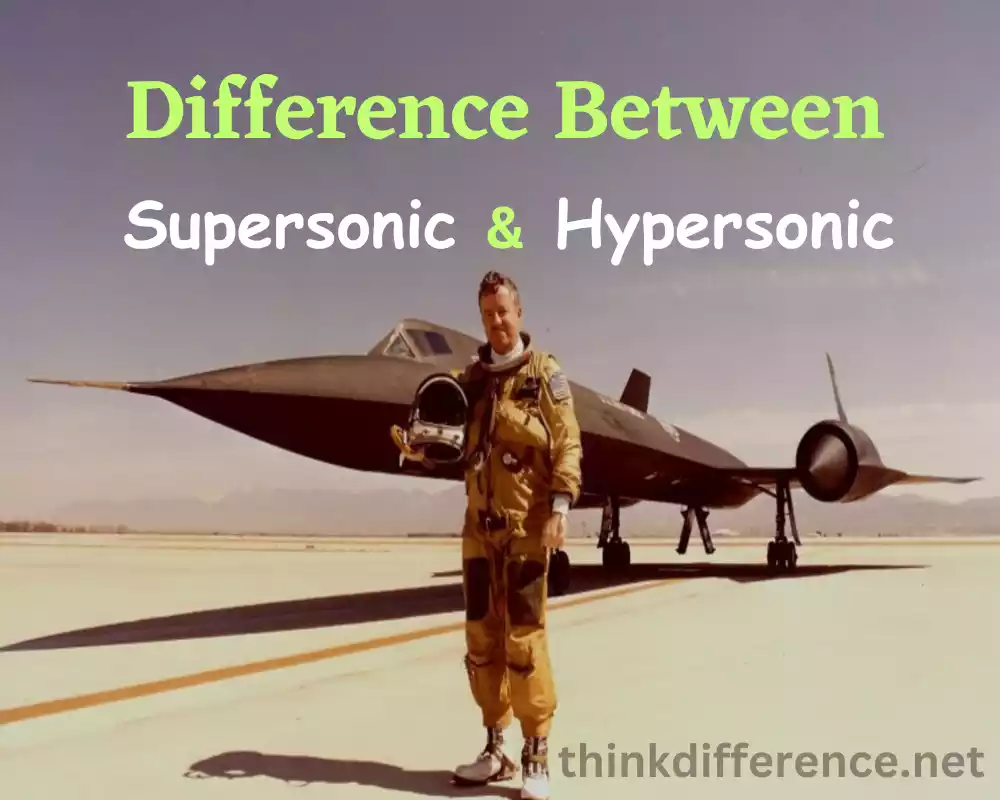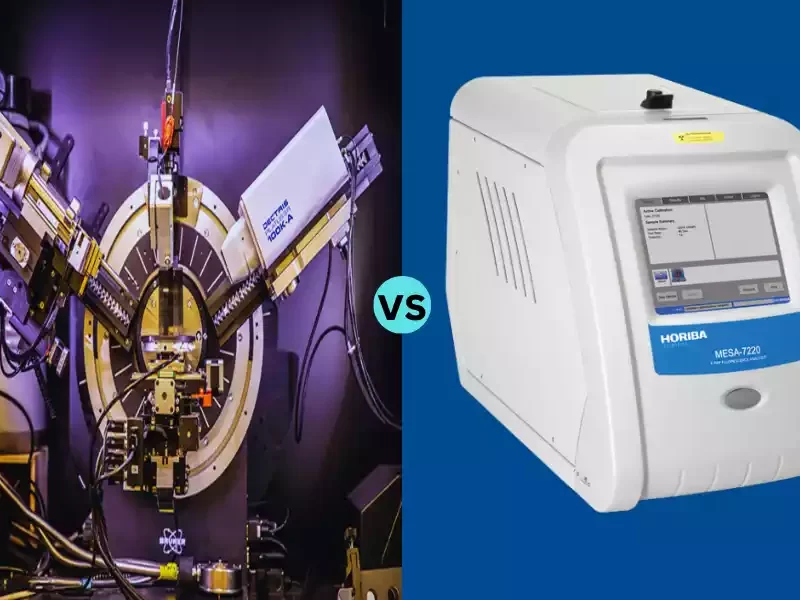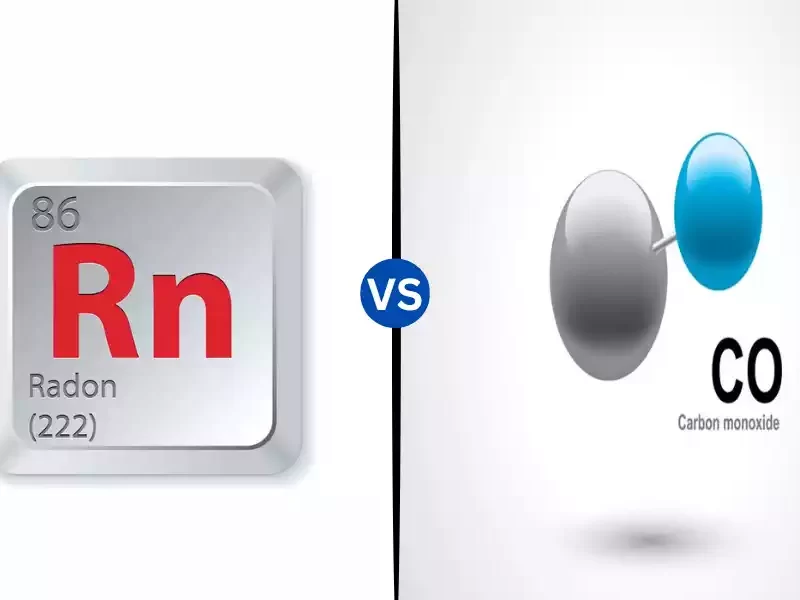A Definition of Supersonic and Hypersonic
Supersonic:
Supersonic speeds refer to speeds which exceed the speed of sound. Otherwise known as Mach 1 velocity. Sound travels approximately 343 meters/second (1,125 feet/second), covering an approximate 1,236km/hour (768 miles/hour). A supersonic velocity object traveling faster than Mach 1 typically exhibits shockwaves or loud sonic blast.
Hypersonic:
Hypersonic speeds are much greater than sound speeds and typically begin around Mach 5, or five times sound speed – this equates to approximately 6,174 km per hour (3 836 miles per hours) or 1,72 kilometers per second (1.07 mile per second). As hypersonic flights cause air compression around an object to become highly compressed causing aerodynamic and extreme heating challenges for flight; to reach and sustain hypersonic flight requires advanced thermal protection systems as well as scramjet propulsion to reach high speeds and maintain them.
Importance and applications of Supersonic and Hypersonic Technologies
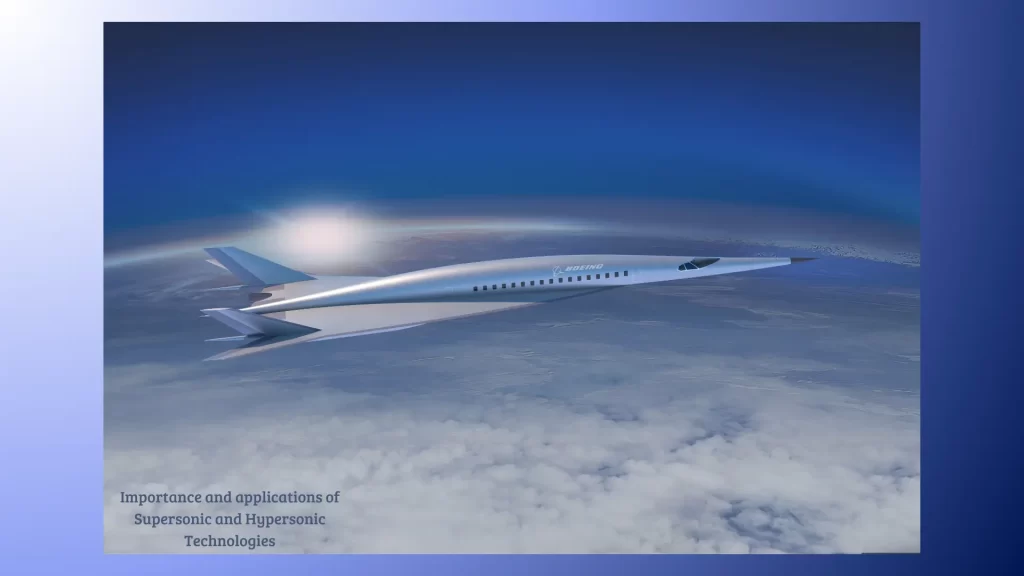
High-speed technologies play a pivotal role in numerous fields and applications. Among these key fields lies biomedical:
Aerospace and Aviation:
- Supersonic: Supersonic Aircraft and other supersonic aircraft offer faster travel times that reduce flight times for long distance journeys, making these aircraft attractive options for executive business travel or luxury transport purposes.
- Hypersonic: Hypersonic vehicles could revolutionize space exploration as well as terrestrial travel by offering faster access to space missions at reduced launch costs and opening new opportunities to deploy satellites faster and more efficiently than before.
Defense and Military:
- Supersonic: Supersonic weapons provide greater speed and maneuverability while improving military capabilities such as response times, target engagement rates and air defence systems.
- Hypersonic: Hypersonic missiles can even defeat existing missile defense systems due to their higher speeds – making them highly effective tools of strategic warfare that reduce response times while improving precision for more successful military missions.
Scientific Research and Testing:
- Supersonic: Supersonic research facilities and testing centers use supersonic tests and research facilities to test aircraft and missile designs and study how supersonic flow affects different objects.
- Hypersonic: Hypersonic technology plays an essential role in studying high-speed aerodynamics and material behavior under extreme conditions – expanding knowledge areas like fluid dynamics, thermodynamics and material science.
Transportation Innovation:
- Supersonic: Efforts are being made to develop quieter, more fuel-efficient, supersonic commercial aircraft. This will make high-speed travel easier, more comfortable and environmentally-friendly.
- Hypersonic: Hypersonic systems such as air-breathing vehicles are being investigated for future transport networks. These vehicles would revolutionize travel between continents by drastically cutting flight times.
Space Exploration and Satellite Technology:
- Supersonic: Supersonic vehicles such as space shuttles and supersonic reentry vehicles have played an essential role in humanity’s exploration of space, providing astronauts with safe reentry back to Earth after missions into outer space.
- Hypersonic: Hypersonic spacecraft and reentry vehicles offer more rapid travel speeds for sample collection – potentially augmenting exploration efforts significantly.
Hypersonic and supersonic technologies are making strides forward in various sectors such as transportation, defense and scientific research – with potential to revolutionise numerous industries by expanding human speed and efficiency limits.
Supersonic
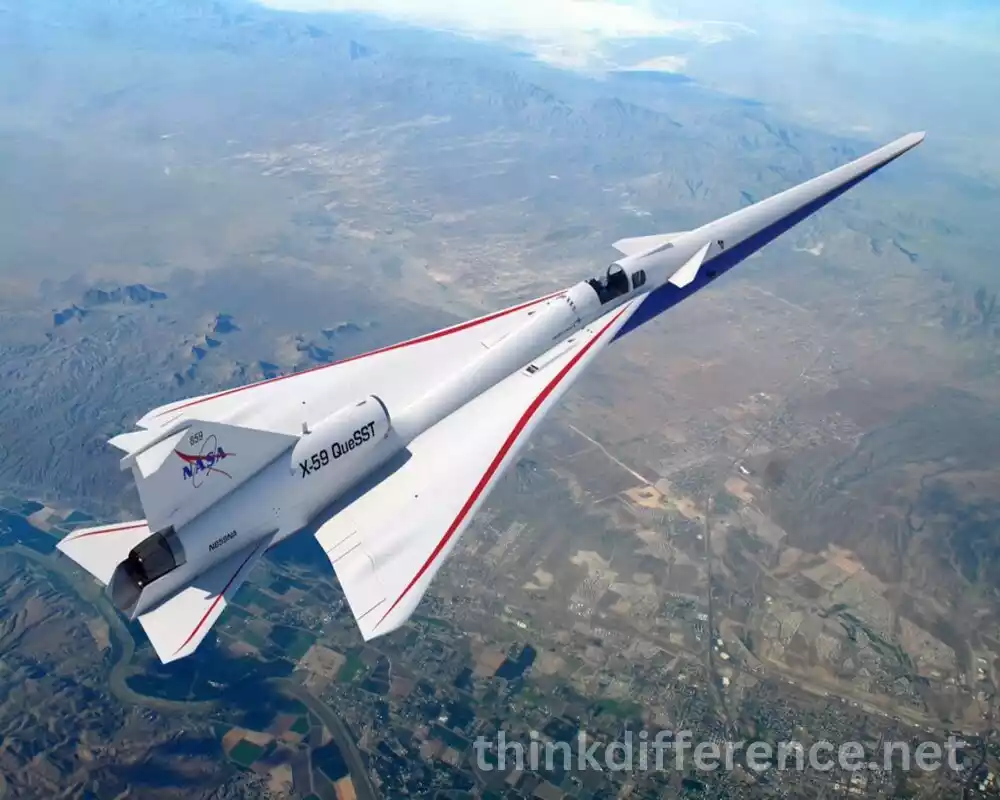
Supersonic speeds refer to air speeds exceeding the speed of sound within their medium; typically this refers to air. At 20 degrees Celsius (68 degree Fahrenheit), sound travels at 343 meters per second (1.125 feet per sec) — equivalent to 1,236 kilometers (768 miles). A supersonic velocity, defined as traveling faster than Mach 1, is defined as travelling at speeds exceeding this threshold.
Supersonic speeds have several key characteristics:
- Shockwaves: At supersonic speeds, an object traveling at supersonic speed creates shockwaves as air molecules compress rapidly under its rapidly increasing momentum. These shockwaves can create a sonic boom, a loud and distinctive noise caused by the sudden release of energy when the shockwaves reach the ground or an observer.
- Aerodynamic Challenges: Aerodynamic forces and phenomena change significantly when transitioning from subsonic to supersonic speeds. The behavior of airflow around an object becomes more complex, and new challenges arise in terms of stability, control and drag. Designing aerodynamically efficient shapes and control surfaces becomes critical to ensuring safe and stable flight.
- Heating Effects: The high-speed air molecules impacting the surfaces of an object traveling at supersonic speeds generate intense heat. This aerodynamic heating can cause significant temperature increases on the vehicle’s leading edges and surfaces, requiring the use of specialized materials and thermal protection systems to manage the heat and prevent structural damage.
Supersonic speed has found applications in various domains, including:
- Supersonic Aircraft: Concorde was the world’s iconic supersonic aircraft and operated commercially from 1976 until 2003. Capable of reaching Mach 2 or twice the speed at which sound travels, this passenger aircraft significantly cut travel times on long haul flights by reaching speeds up to Mach 2. Concorde sought to bring back supersonic flight in an efficient yet eco-friendly fashion.
- Supersonic Missiles: Supersonic speed can be leveraged militarily through missiles that travel at high speeds in order to quickly intercept targets or deliver payloads.
Supersonic speeds offer many benefits, including decreased travel time and enhanced military capabilities, but they also bring about various obstacles, including restrictions on sonic booms, higher fuel consumption costs and noise pollution.
Research and development continue to investigate supersonic technology to help address challenges associated with future high-speed travel.
Hypersonic
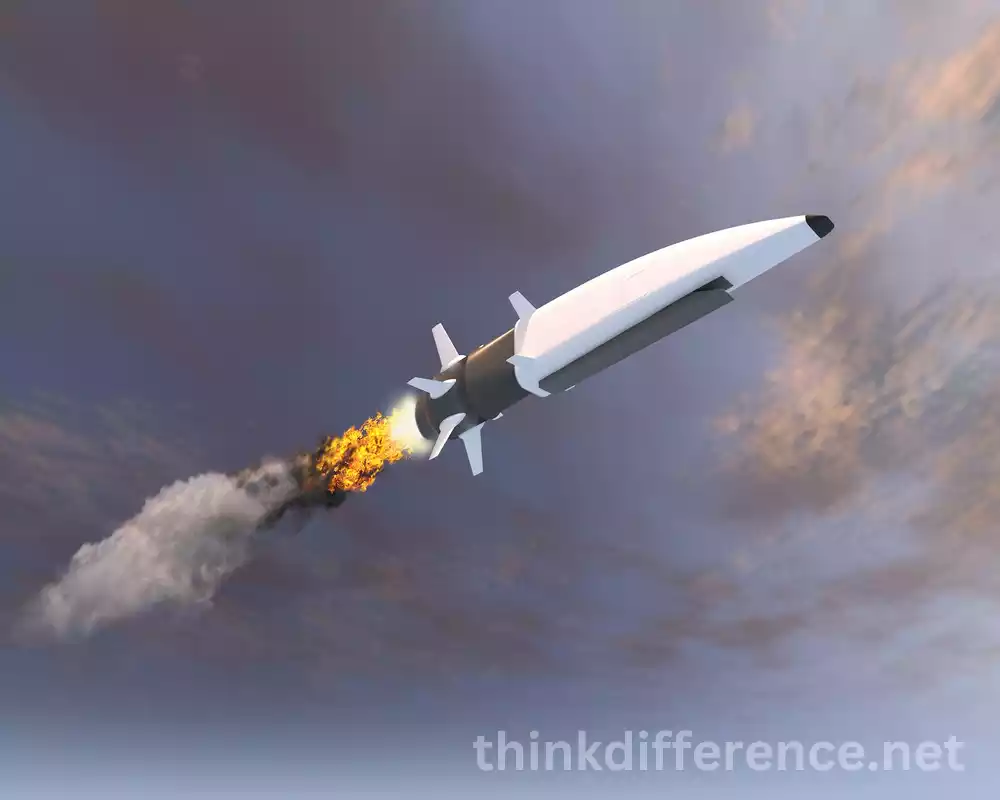
Hypersonic speeds refer to any speeds greater than sound speed in any medium; typically airspeed. Although hypersonic speeds have many definitions, one such definition would start around Mach 5 (five times sound speed); at sea level and 20 degree Celsius Fahrenheit this equates to approximately 1,715 meters per sec (5,627 feet/second or 6,174 km/h (3,836 mile/hour).
Hypersonic speeds exhibit several distinctive characteristics:
- Extreme Aerodynamic Heating: When an object moves through the air at hypersonic speeds, the compression of air molecules generates intense heat. Aerodynamic heating technology can quickly reach temperatures well beyond 1,000deg Celsius (1,800deg Fahrenheit). Managing and dissipating this heat is a critical challenge in hypersonic flight.
- High-Speed Airflow: At hypersonic speeds, the behavior of airflow around an object becomes highly complex. Strong shockwaves and regions of highly compressed air create unique aerodynamic forces, such as high drag and increased skin friction. Designing vehicles and structures to withstand and utilize these forces effectively is essential.
- Scramjet Propulsion: Scramjet engines are used in hypersonic vehicles for propulsion. These air-breathing high-speed engines breathe air. Scramjets rely on the vehicle’s high-speed airflow to compress and ignite the fuel, eliminating the need for traditional fuel combustion systems like turbojets. This enables higher speeds and more efficient propulsion.
Hypersonic speed has applications in various fields, including:
- Hypersonic Aircraft: Hypersonic aircraft are being developed for potential applications in both military and civilian domains. These aircraft could revolutionize long-distance travel by significantly reducing flight times. They could also have military applications, offering rapid response capabilities and the ability to strike targets with high speed and precision.
- Hypersonic Missiles: Hypersonic missiles’ extraordinary speed, maneuverability and agility have attracted much interest. They have the potential to overcome existing missile defense systems, making them highly effective in strategic warfare scenarios. Hypersonic missiles can deliver payloads at great distances in minimal time, enhancing military capabilities.
- Hypersonic Space Vehicles: Hypersonic technology is of critical importance in creating reusable space vehicles and satellites. These vehicles could enable more efficient access to space, allowing for faster satellite deployment, space exploration missions, and potential future colonization efforts.
Hypersonic speeds present several unique challenges for researchers and technology developers; these obstacles must be met head on in order to unlock all the potential that hypersonic technologies present across many applications including transportation, defense and space exploration. Yet advances are being made towards meeting them head-on.
Research and technological innovations aim at solving them so as to unlock hypersonic full potential across transportation, defense and space exploration applications.
Differences between Supersonic and Hypersonic
These two speeds differ drastically in numerous aspects. Their differences range from the ranges and aerodynamic challenges they present, material considerations, applications, propulsion systems etc. Here are some key examples:
Speed Range:
- Supersonic: Supersonic speeds typically fall within the Mach 1 to Mach 5 range, where sound travels at approximately one third the speed at which its frequency occurs; five times this speed would be Mach 5.
- Hypersonic: Hypersonic Speeds exceed five-times this speed to become hypersonic. A hypersonic velocity exceeds five times five-fold the sound speed.
Aerodynamic Challenges:
- Supersonic: When objects travel faster than sound speed, shockwaves form. This causes supersonic flight. Shockwaves create aerodynamic drag which increase stress on vehicles and cause stress-inducing aerodynamic drag that increases aerodynamic drag drag forces on them.
- Hypersonic: Hypersonic flights present unique challenges due to high temperatures and aerodynamic heating generated during air compression at extreme speeds, leading to heat generated that must be managed effectively or it may lead to structural damage and require thermal protection systems for safety measures to mitigate it.
Material Considerations:
- Supersonic: Materials designed for supersonic vehicles must withstand both the high-speed flight stresses and aerodynamic heat effects, commonly heat resistant materials like titanium alloys are preferred.
- Hypersonic: Given the extreme temperatures encountered during high-speed travel, hypersonic flights require even more advanced materials for protection from extreme heat exposure. Thermal protection systems using ceramic composite materials help shield vehicles against this extreme temperature source.
Propulsion Systems:
- Supersonic: Vehicles reaching supersonic speeds typically employ turbojet engines with afterburning capabilities to overcome drag in order to achieve supersonic speeds. Such engines generate enough thrust that overcomes drag in order to reach supersonic speeds.
- Hypersonic: Cars that travel at hypersonic speed typically utilize scramjet engines – an air-breathing engine which compresses and ignites air entering to provide efficient propulsion at hypersonic speeds without using turbojets or conventional fuel combustion systems like turboprop engines.
Applications and Purposes:
- Supersonic: Supersonic technology has been employed on supersonic passenger flights (such as Concorde) as well as military operations employing supersonic aircraft or missiles.
- Hypersonic: Hypersonic technology finds use in high-speed weapons and space exploration, as well as potential future transportation systems. Hypersonic vehicles offer enhanced military capabilities while simultaneously providing access to space more quickly for satellite launches and providing efficient access to orbit.
Supersonic and ultrasonic flights both aim for high speeds. Some overlap may exist in research, technology and application of both forms of flight. Advancements made in this arena continue to push forward the boundaries of high-speed exploration and aviation.
Supersonic and Hypersonic Technologies in Space Exploration
Hypersonic and supersonic technologies play a pivotal role in space exploration. Their distinctive capabilities can transform space missions while giving us new insights into our universe. Below are a few ways that supersonic/ultrasonic tech relates to space exploration:
- Reusable Space Vehicles: Reusable spacecraft design necessitates employing supersonic and hypersonic technologies for development. Reusability allows for more cost-effective space missions by reducing the need for building new vehicles for each launch. These vehicles can achieve high speeds during reentry into Earth’s atmosphere, necessitating advanced thermal protection systems to withstand the intense heat generated by aerodynamic heating.
- Faster Satellite Deployment: Hypersonic technologies enable faster satellite deployment into orbit. Hypersonic vehicles can carry multiple satellites simultaneously and release them at high velocities, reducing the time required for satellite constellation deployments and improving global coverage.
- Sample Return Missions: Supersonic and hypersonic capabilities are advantageous for sample return missions from celestial bodies such as the Moon, Mars and asteroids. High-speed reentry into Earth’s atmosphere allows for faster delivery of valuable samples while minimizing potential contamination and degradation.
- Interplanetary Travel: Hypersonic technologies could enable faster interplanetary travel. By reaching extremely high speeds, spacecraft can reduce travel times between planets, enabling more frequent and efficient exploration missions. This could enhance our ability to study multiple celestial bodies within a shorter timeframe.
- Planetary Aerodynamics and Entry Systems: Supersonic and hypersonic aerodynamics play a crucial role in designing entry systems for planetary missions. These systems are responsible for safely decelerating spacecraft during atmospheric entry, managing heat generated by high-speed travel and enabling precise landing or atmospheric research. Understanding and modeling the behavior of spacecraft in supersonic and hypersonic regimes is vital for designing successful entry, descent and landing systems.
- Sample Return from Other Worlds: Hypersonic technologies are instrumental in the return of samples from other worlds. These samples provide invaluable insight into the composition, geology and potential life forms found on other planets or moons. Hypersonic vehicles capable of safely reentering Earth’s atmosphere can transport these precious samples back for detailed analysis by scientists.
- Space Tourism: Supersonic and hypersonic technologies could play a role in future space tourism endeavors. Space tourists could enjoy an immersive space tourism experience using high-speed vehicles that would quickly take them into orbital and suborbital altitudes.
Technology advancement will spur further advancements in space exploration missions, making missions cost-effective and efficient while opening up new frontiers of our understanding.
The Impact on Transportation and Travel
These technologies could transform travel and transportation in numerous ways. Here are just a few potential impacts these innovations could have:
- Reduced Travel Times: Supersonic and hypersonic speeds enable dramatic reductions in travel times. Supersonic aircraft could complete long distance flights that currently take several hours in just minutes or hours, such as New York to London flights (currently eight). Hypersonic travel could further decrease times by providing intercontinental journeys within just hours!
- Increased Connectivity: Hypersonic travel times would greatly expand global connectivity. They would enable businesses to manage international operations more effectively, facilitate personal travel across continents more readily and foster cultural exchange by making distant locations more easily accessible.
- Economic Benefit: Improvements in transportation speeds have significant ramifications on our economy. Faster travel makes meetings, collaborations and international trade more frequent and accessible – providing business meetings more often as well as increasing revenue within hospitality and tourism industries.
- Emergency Response and Humanitarian Aid: Supersonic and hypersonic technologies could revolutionize emergency response and humanitarian aid efforts, providing faster deployment times to disaster-struck regions or those needing immediate aid, potentially saving more lives through faster response times and swift deployment.
- Space Tourism: High-speed technologies hold great promise to enable space tourism experiences. Suborbital flights at supersonic speeds could offer individuals the unique and thrilling adventure of experiencing space travel for themselves while experiencing weightlessness for themselves – providing an experience unlike anything else on Earth! Hypersonic speeds could further extend space tourism possibilities by potentially opening orbital flights up for tourists as an additional attraction.
- Impact on Aviation Industry: Supersonic and hypersonic technologies would pave the way for new aircraft designs and propulsion systems, necessitating advances in aerodynamics, materials science, engine technology and aerospace manufacturing technologies – opening up opportunities for airlines, manufacturers and other related businesses alike.
- Environmental Considerations: One of the greatest concerns associated with supersonic flight is increased fuel consumption and environmental impacts due to higher speeds and drag forces, yet future advances could result in more fuel-efficient supersonic and hypersonic technologies using sustainable aviation fuels that minimize their overall ecological footprint footprint.
As is true of most new technologies, adopting supersonic and hypersonic transportation technology would present various challenges – noise pollution, regulatory frameworks, infrastructure development, safety considerations and affordability among them – but with that comes potential to revolutionise how we travel by providing faster, more cost-efficient transport options than ever before.
Supersonic and Hypersonic Weapons Systems
Hypersonic and supersonic weapons systems development represent an area of major military significance. Here are a few important points about such weapon systems:
Supersonic Weapons Systems:
- Supersonic Missiles: Supersonic Missiles have several distinct advantages when used against certain defense measures reduced target time, greater target penetration capability and enhanced effectiveness against specific types of defences.
- Supersonic Anti-Ship Missiles: These missiles are specifically designed to attack naval vessels at high speed. Their quick response times enable quicker countermeasures while making it more challenging for opposing air defense systems or ships to intercept these threats.
- Air-to-Air Missiles: Supersonic air-to-air missiles enhance the capabilities of fighter planes by quickly closing distance and engaging an enemy aircraft, giving an aerial battle advantage to combatants.
Hypersonic Weapons Systems:
- Hypersonic Missiles: Hypersonic missiles have the capability to exceed sound speed, often traveling at over Mach 5. These missiles present formidable defense challenges due to their speed, maneuverability and range; hitting targets at incredible speed reduces time required to take protective steps against attacks from these hypersonic weapons.
- Prompt Global Strike: Hypersonic technology is currently under research to create global strike systems with prompt global strike capabilities. Such systems use conventional warheads delivered within short timespan to distant targets to provide quick responses in time-critical engagements.
- Strategic Weapons: Hypersonic technologies can be applied to improve strategic weapon systems like hypersonic glider vehicles or cruise missiles for advanced precision strikes, greater deterrence and penetration through sophisticated air defenses.
Advantages and Challenges:
- Speed and Maneuverability: Hypersonic and supersonic weapon systems are extraordinarily fast, making them difficult to intercept while providing for rapid responses and action.
- Increased Range and Reduced Time to Target: High speeds enable these weapons systems to cover longer distances in shorter timeframes, enhancing operational flexibility and reducing the risk of detection and interception.
- Technological Challenges: Developing and maintaining supersonic and hypersonic weapons systems pose significant technical challenges. These include managing extreme temperatures, ensuring structural integrity, designing effective propulsion systems and addressing control and stability issues.
Supersonic and hypersonic weapon systems are subject to international arms control treaties and political considerations, making their use subject to ethical and legal constraints for warfare and force.
Supersonic and hypersonic weapon systems boasting fast speeds can offer advantages in combat situations. But they also present challenges in terms of technological development, stability, safety and possible arms races – so responsible use must take place to use and manage such technologies safely. It is imperative to consider strategic, ethical and international security considerations.
Overcoming Technical and Safety Challenges
As part of their successful implementation, supersonic or hypersonic technologies must successfully negotiate technical and safety hurdles. Below are a few strategies and approaches for meeting this challenge:
- Materials Development: It is of utmost importance that engineers develop advanced materials capable of withstanding extreme temperatures, aerodynamic forces and pressures. Research efforts focus on producing heat-resistant and lightweight materials suitable for structural components, thermal protective systems and propulsion systems.
- Thermal Management: Proper thermal management during high-speed flights is crucial. New cooling techniques including passive cooling, active cooling and thermal barrier coatings are being explored as means of protecting vehicle structure and critical components from potential heat-induced damages.
- Aerodynamics and Control: Understanding and modeling the complex aerodynamic behavior of supersonic or hypersonic vehicles to achieve stability and control is vital in order to reach stability and attain control. Wind tunnel testing and computational fluid dynamics simulations help optimize vehicle designs while decreasing aerodynamic drag to improve stability and control.
- Propulsion Systems: At the core of it all lies propulsion system design developing reliable propulsion systems capable of producing thrust at high speeds efficiently, using cutting edge engine technologies such as scramjets and ramjets for maximum performance and efficiency.
- Safety and Reliability: Supersonic and Hypersonic technologies demand tight attention to both safety and reliability. In order to validate vehicle performance, structural integrity under extreme conditions and monitor and control them safely during flight testing. Extensive ground and flight tests are conducted alongside reliable systems designed for monitoring flight operations while in flight.
- Noise Reduction: Supersonic flights generate sonic booms which present regulatory restrictions and noise pollution challenges, necessitating research to lessen their impacts through innovative aircraft designs, noise mitigation strategies and shaping techniques. Supersonic technology that is quieter would enable regulators to allow supersonic flights over more populated areas without incurring as many regulatory restrictions.
- Regulatory Frameworks: Establishing effective regulatory frameworks is vital in order to guarantee safe and responsible application of supersonic or hypersonic technology. International cooperation and coordination will help address safety, operational and environmental considerations that might arise during deployment of supersonic or hypersonic technology.
- Testing and Certification: In order to test, verify, and certify hypersonic and supersonic vehicles’ performance, safety and reliability it will require rigorous testing and certification processes. Working together with industry stakeholders such as government agencies or regulatory bodies in developing testing protocols or certification criteria will be key in fulfilling this responsibility.
To overcome these difficulties, an integrated, collaborative effort involving aerospace engineers, materials experts, propulsion specialists and regulatory authorities must take place. Through research, development and testing as well as iterative design methods we will find ways to overcome technical and safety concerns while expanding capabilities of hypersonic and supersonic technologies.
Environmental Considerations
Environmentalism must always be kept in mind when developing and deploying hypersonic or supersonic technologies, whether for transportation purposes or space exploration. While such technologies have the ability to improve transportation or exploration capabilities, they also pose some environmental threats – Here are a few concerns regarding supersonic or hypersonic tech:
- Noise Pollution: Supersonic flight generates sonic booms, which are loud, impulsive sounds caused by shockwaves created when an aircraft exceeds the speed of sound. Sonic booms can be disruptive and have led to regulatory restrictions on supersonic flights over populated areas. Developing quieter supersonic technologies and addressing noise concerns are critical for mitigating the environmental impact and ensuring acceptance of supersonic travel.
- Carbon Emissions: High-speed flights increase fuel consumption and CO2 emissions significantly, leading to greater waste production and greater CO2 emission rates. Supersonic and hypersonic technologies must strive to minimize their carbon footprint through the use of advanced engine designs, improved fuel efficiency, and the adoption of sustainable aviation fuels. Researching hybrid-electric or electric propulsion systems could further decrease their environmental footprint.
- Ozone Depletion: Hypersonic flight at altitudes where the ozone layer is present raises concerns about potential ozone depletion. Hypersonic vehicles have the capacity to release nitrogen oxides into the atmosphere due to their fast speeds and heights, thus contributing to global warming. NOx emissions can catalytically deplete the ozone layer, contributing to environmental concerns. Strategies to mitigate this impact include optimizing engine design and operation to minimize NOx emissions.
- Atmospheric Pollution: High-speed flight also contributes to other forms of pollution in the atmosphere, including particulate emissions and vaporized water. These emissions may have localized or regional environmental effects and need to be carefully monitored and managed to minimize their impact.
- Ecological Impact: The development of supersonic and hypersonic technologies should consider potential ecological impacts, especially during testing and operations. Care must be taken to assess and mitigate any adverse effects on wildlife, ecosystems and sensitive habitats in the vicinity of test ranges or launch sites.
To address these environmental challenges, a holistic strategy incorporating research and development, technological optimization and regulatory measures must be put in place. Industry representatives must coordinate closely with environmental organizations so as to achieve technological advances while safeguarding environmental stewardship.
Prioritising sustainability when selecting supersonic and ultrasonic technology is vital in order to minimize environmental damage caused by such solutions.
Future Prospects
Hypersonic and supersonic technologies show great promise for their future development and deployment, with research, development and investment efforts ongoing to solve current problems while opening up exciting new vistas of possibilities. Here are a few potential paths forward:
Supersonic Commercial Travel:
- Future supersonic designs must address issues like high operating costs and noise pollution. Commercial aircraft could incorporate advanced aerodynamics, engine efficiency and noise suppression technologies that make these aircraft quieter, more fuel-efficient and economically sustainable.
- Supersonic business aircraft could soon be introduced to meet the niche market of luxury traveler. Such jets could speed travel between distant locations both for business purposes as well as pleasure.
Hypersonic Flight:
- Hypersonic flight has the potential to revolutionize satellite deployment and space exploration. Hypersonic vehicles allow faster, less costly access to outer space – potentially opening doors for advancements in satellite communications, scientific research and space missions.
- Reusable hypersonic vehicles could significantly lower space launch costs while opening up space to more industries and scientific pursuits.
Military Applications:
- Hypersonic and supersonic technology in military operations offers significant advantages. Advancements in hypersonic or supersonic missiles could further increase precision strike capability, improve air defense systems and shorten response times while increasing rapid response time.
- Hypersonic weapons could help expand strategic capabilities while offering greater operational flexibility.
Advanced Materials and Manufacturing:
- Supersonic and hypersonic technologies require substantial advancements in materials science and manufacturing to remain viable, including developing lightweight yet heat resistant and durable materials that can withstand high-speed flights. To remain cost competitive it must also remain lightweight.
- Additive manufacturing (3D printing techniques) could revolutionize production by making customizing and prototyping high-speed cars more quickly.
Environmental Considerations:
- Future supersonic or hypersonic technologies aim to minimize their environmental impact. Supersonic aircraft have seen noise reduced while fuel efficiency improved to cut emissions. Developments of sustainable aviation fuels, electric propulsion systems and environmentally friendly high speed travel could further decrease environmental footprint.
Space Tourism and Intercontinental Travel:
- Hypersonic technology could dramatically shorten long distance journeys by making intercontinental travel possible in hours, drastically cutting travel times for intercontinental journeys.
- Space tourism is now possible thanks to safer and easier hypersonic vehicle access.
Realizing future opportunities depends upon being able to address technical, economic and regulatory hurdles successfully. Supersonic and Hypersonic Technologies possess great promise as technologies with potential that could transform air travel, space exploration and military capability with sufficient investment and innovation.
Last words on Supersonic and Hypersonic
Supersonic and Hypersonic technologies represent incredible achievements in the world of high-speed travel. While supersonic travel has already left its mark with iconic aircraft like the Concorde, hypersonic technology offers even greater promise for the future. As advancements continue, these technologies could reshape the way we travel, explore space, and connect with each other on a global scale.

